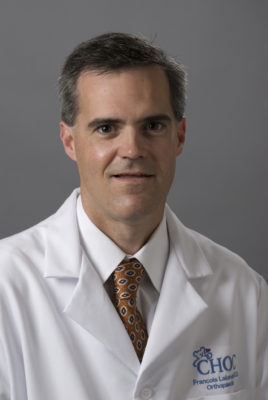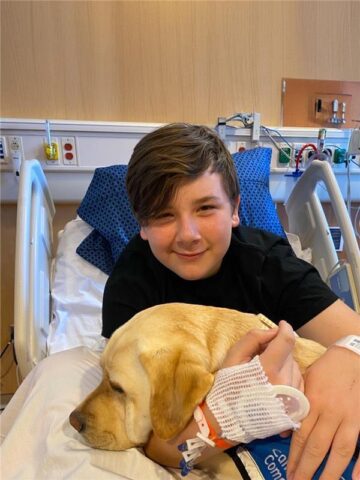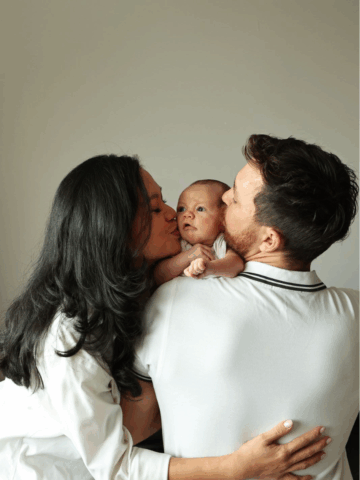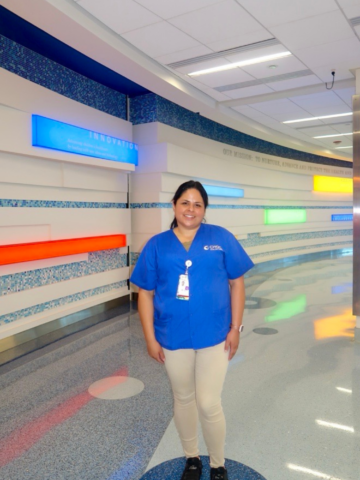CHOC wants its patients and families to get to know its specialists. Today, meet Dr. Francois Lalonde, a board certified pediatric orthopedic surgeon.

What is your education and training?
I attended medical school at University of Toronto School of Medicine. I completed my orthopedic surgery residency at the University of Ottowa, and a pediatric internship at Montreal Children’s Hospital/McGill University. I completed a pediatric orthopedic surgery fellowship at both Children’s Hospital of Eastern Ontario/University of Ottawa, and San Diego Children’s Hospital and Health Center/University of California San Diego.
What are your current administrative appointments?
I am president of the CHOC Orange medical staff; medical director of the hip program, CHOC Orthopedic Institute, member of the CHOC board; and president of Adult & Pediatric Orthopedic Surgery medical group.
How long have you been on staff at CHOC?
11 years.
What are your special clinical interests?
My clinical interests include infant, child, adolescent and young adult hip conditions (DDH, Perthes, SCFE, impingement); pediatric fractures and musculoskeletal injuries; pediatric foot conditions and reconstructive surgery; general pediatric orthopedic conditions; limb lengthening; surgical treatment of bone deformity in osteogenesis imperfecta; and cerebral palsy.
What are your most common diagnoses?
We see a variety of conditions, including forearm and elbow fractures; developmental dislocation of the hip in infants; Perthes disease; slipped capital femoral epiphysis (SCFE) condition of the hip; joint, extremity pain in children, adolescents (overuse, growth-related); idiopathic adolescent scoliosis; among others.
Are you working on any current research?
Yes, on Legg-Calve-Perthes research. We are looking at our five year experience with patients treated with open hip adductor lengthening, range of motion, nighttime orthosis and limited weight bearing protocol. Our patients have maintained femoral head sphericity and containment with congruent hip joint with very limited surgery. Many patients have been back to sports without any symptoms.
What are some new programs or developments within your specialty?
Orthopedic surgeons are better able to diagnose hip impingement based on radiographic and imaging assessment and depending on severity of underlying findings or condition, treat this condition with arthroscopy or surgical hip dislocation with femoral head/neck osteochondroplasty and/or acetabular rim trimming. In doing so, we are better able to differ the onset of premature degenerative changes (arthritis) of the hip.
Advanced hip joint preservation surgical techniques such as the Ganz periacetabular ostetomy and relative femoral neck lengthening have emerged to treat the sequelae of developmental dysplasia of the hip and other childhood conditions. In the appropriate setting, these surgical techniques are able to relieve hip pain and significantly delay or prevent the onset of premature degenerative changes (arthritis) of the hip.
A modular magnetic intramedullary nail (Precise nail) is now available to allow orthopedic surgeons to lengthen the femur or tibia by up to 8 cm in patients with moderate or large limb length inequality. This internal device is being better tolerated by patients with less soft tissue irritation.
In addition, for several years now, the Fassier-Duval telescoping intramedullary nail has been used at CHOC to correct severe deformities of the femur and/or tibia in patients with osteogenesis imperfecta. This modular implant which is anchored at the top and bottom telescopes as the bone grows and has helped avoid multiple revision surgeries in childhood due to migration of the implant and refracture.
What would you most like community providers to know about your division at CHOC?
Our division covers the entire spectrum of subspecialties in pediatric orthopedics (fractures, upper extremity, spine, hip, lower extremity, sports medicine, foot/ankle, bone tumours, neurosmuscular conditions – cerebral palsy, spina bifida, muscle disease, osteogenesis imperfecta, brachial plexus injury, concussion). We have three offices in Orange, Irvine and Mission Viejo, in addition to the CHOC Clinic. We try to see our referral patients promptly, and are accessible by phone for questions from physicians.
What inspires you most about the care being delivered at CHOC?
I’m inspired by the expertise, drive and dedication of our physicians, nurses and support staff, as well as our state-of-the-art facility, the wide range of subspecialists within pediatrics, the emphasis on patient safety and experience, and the emphasis on delivering high-level quality care to our patients.
Why did you decide to become an orthopedic surgeon?
I decided to become a doctor as a teenager. I had a part-time job as a lifeguard at local pools and beaches in Ottawa, Canada, in which I was required to take first aid courses, and that piqued my interest. Later, while attending university, I worked as a children’s swim instructor and gained interest in pediatrics and pediatric orthopedics. I became interested in orthopedic surgery as a medical student during a pediatric orthopedic surgery rotation when I was exposed to a great role model.
In addition, my uncle, who is an obstetrician and gynecologist, was an early role model. I often listened to him talk about his work and schedule during the summer. I used to spend the entire summer at my parents’ cottage in the Laurentians in Quebec, Canada. My uncle’s cottage was right next door. I liked the diversity of his daily routine. His days were busy either seeing patients in his office for initial consultation or follow-up, or performing surgeries or delivering babies.
If you weren’t a physician, what would you be and why?
I would have become a marine biologist. I became interested in this field by watching documentaries, taking biology classes, and by scuba diving.
What are your hobbies/interests outside of work?
I enjoy playing ice hockey, as well as watching or attending all sports events.
What have you learned from your patients?
I have learned that making funny noises when I examine babies’ hips really distracts them and elicits a smile and lets me conduct my exam more effectively and reliably. With older kids, I have learned how challenging it is to treat great athletes, who present with joint or extremity pain often from overuse, and they can find it difficult to commit to a period of rest, which is often necessary to allow for recovery.
What was the funniest thing a patient told you?
One of my patients keeps asking me, “Where is your gold tie?” The first time he met me I was wearing a gold tie. Every time he sees me now, he asks me about my gold tie. I keep asking him to call me the day before so that I can wear it on the day he comes but he keeps forgetting to call.
Get more expert health advice delivered to your inbox monthly by subscribing to the KidsHealth newsletter here.
Learn more about CHOC’s Orthopedic and Sports Medicine Services
Our team of board-certified specialists and orthopedics-trained staff provide a full spectrum of care for disorders of the bones, joints, ligaments, tendons and muscles.





